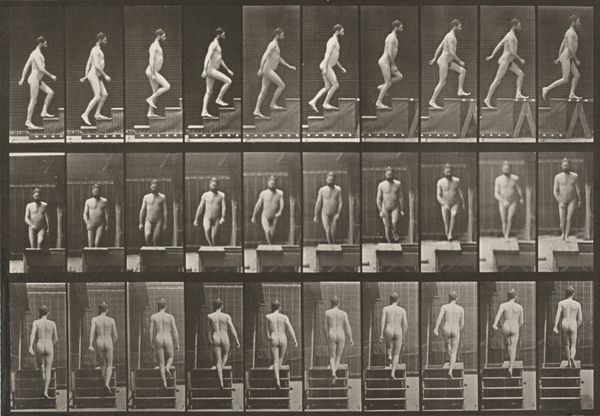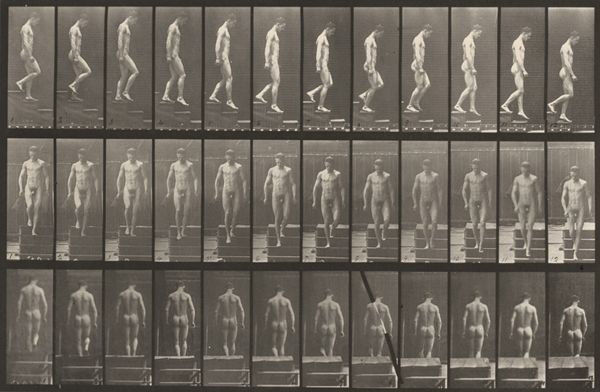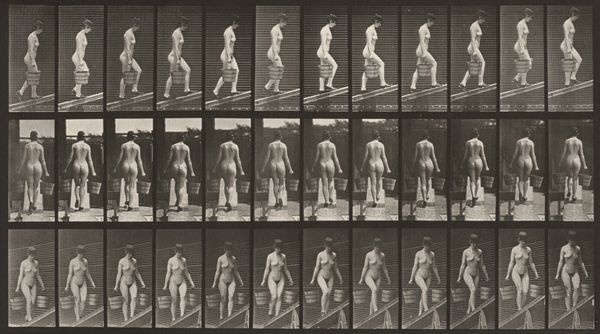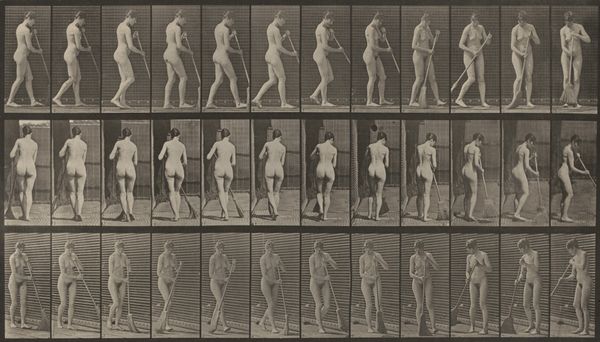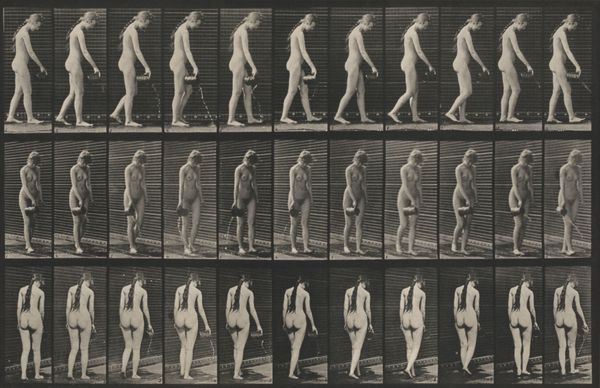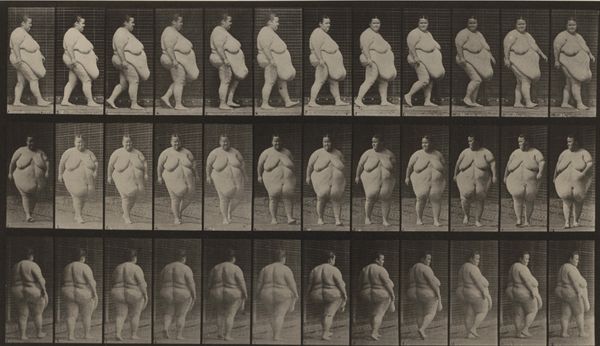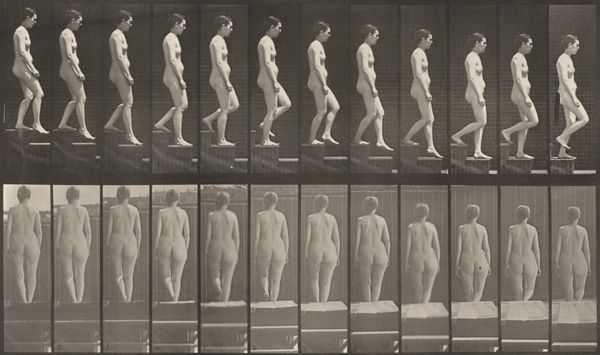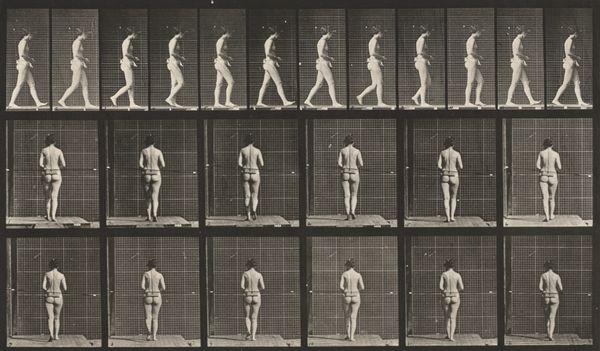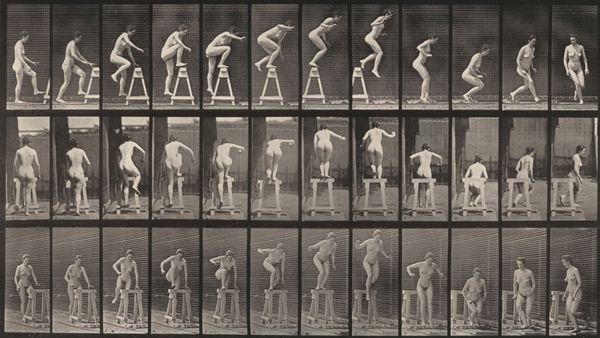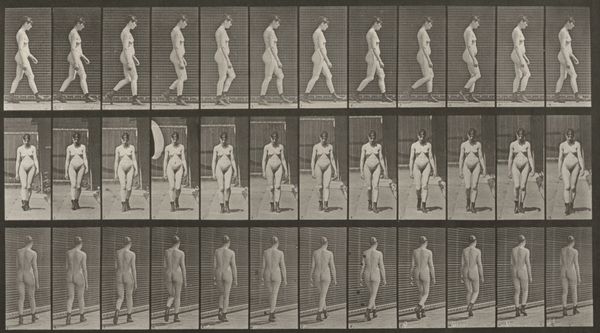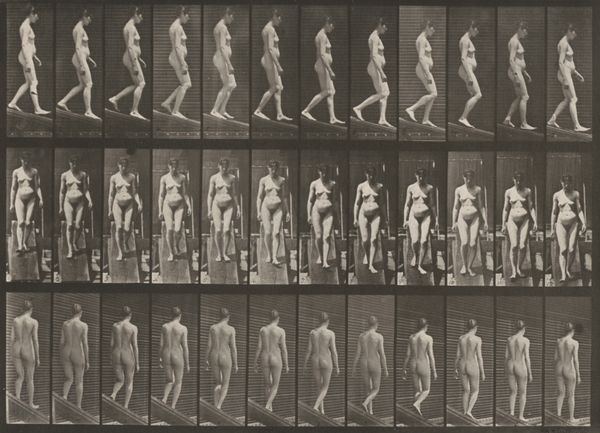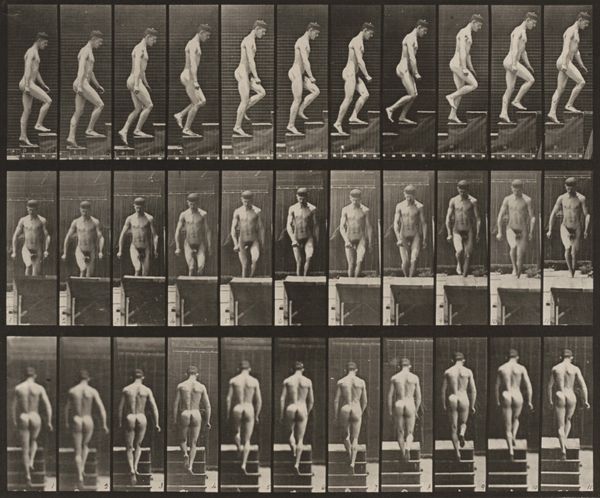
print, photography, gelatin-silver-print
# print
#
figuration
#
photography
#
gelatin-silver-print
#
nude
Dimensions: image: 20.8 × 34.7 cm (8 3/16 × 13 11/16 in.) sheet: 47.5 × 60.2 cm (18 11/16 × 23 11/16 in.)
Copyright: National Gallery of Art: CC0 1.0
Editor: This is Plate Number 114. Descending an incline, an 1887 gelatin-silver print by Eadweard Muybridge. It feels incredibly methodical to look at; the way he breaks down the motion into distinct frames. What strikes you when you look at this? Curator: What I immediately observe is the rhythmic articulation of form, broken down, as you mentioned, into distinct visual components. Muybridge's emphasis seems to be on revealing the very structure of movement itself. Notice the carefully calibrated progression across the grid. How would you describe the tonal variations? Editor: Well, the gray scale seems really important. The neutral background isolates the figure, making the change in light and shadow as he moves really stand out. I guess, the tones reveal the form and volume, right? Curator: Precisely. This work isn’t concerned with narrative, but instead functions as a study in the serialization of appearance. He offers us a chance to dissect something usually seamless. Consider the foreground: a deliberate apparatus to enable the isolation of discreet stages within the complete action. To what effect, do you think? Editor: Maybe it's about the scientific approach? I mean, that rigorous approach reveals aspects we normally wouldn't notice with the naked eye. Curator: Exactly. Muybridge employs the photographic medium to isolate, analyze, and, ultimately, define motion's essence. It underscores how technological advancements provide new modes of seeing, new forms of art. What’s your final reflection? Editor: It makes me think about how much our understanding of movement and even how we represent it has been shaped by these early experiments. I guess, what once was science is now a major pillar of the arts. Curator: Indeed. By foregrounding the visual architecture of movement, Muybridge transcends mere documentation. He allows us to consider motion, itself, as pure form.
Comments
No comments
Be the first to comment and join the conversation on the ultimate creative platform.
